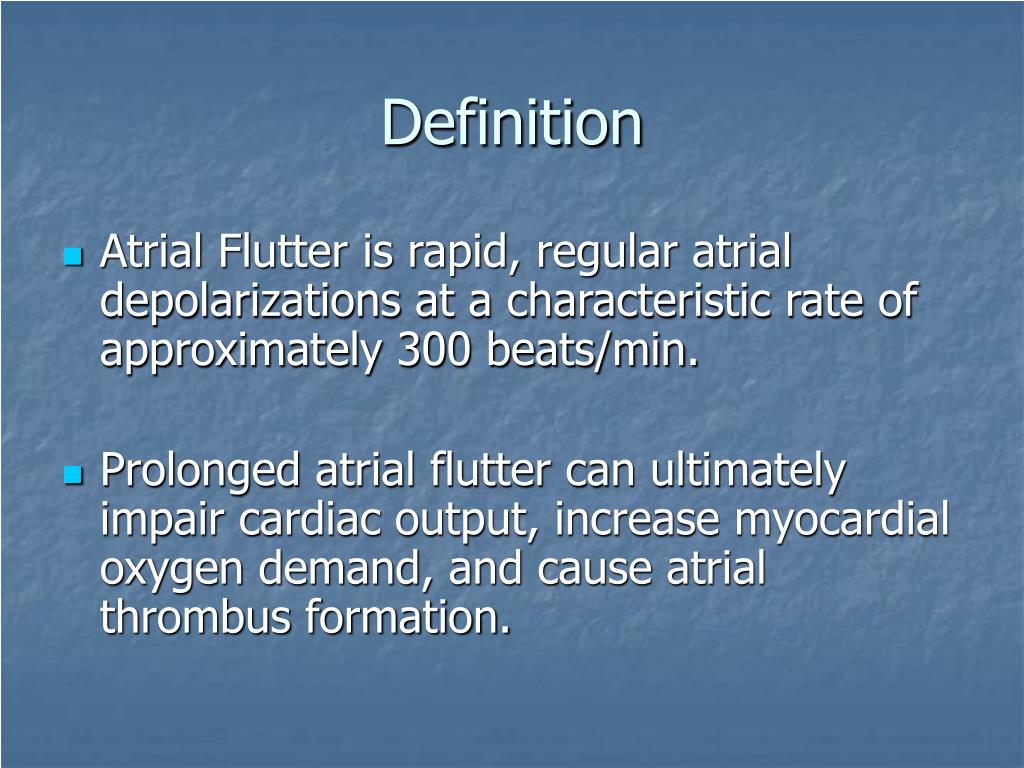
Chronic alcohol use or withdrawal can also be associated with atrial tachycardia. A past medical history significant for chronic lung disease, pulmonary hypertension, or other conditions can predispose the patient to atrial tachycardia.

Also, a social history which should consist of past or present tobacco use, alcohol use, and if the patient consumes caffeine, illicit drugs, or stimulants. Similar to reentry, triggered activity is inducible during an electrophysiology study.Ī detailed history and physical are necessary for every patient, which should include home medications, as well as past medical and surgical history. The triggered activity has features seen with enhanced automaticity, though are felt to primarily involve calcium channels. When the cell experiences further hyperpolarization, and more negative than -70 mV, automaticity may occur via the "funny" current, carried by sodium and potassium ions in sinoatrial, AV nodal, and His-Purkinje cells. Abnormal automaticity arises from spontaneous phase 4 depolarization.ĭuring phase 4, the cardiac myocyte membrane is polarized and at baseline. The inwardly rectifying potassium channel is responsible for maintaining baseline resting potential near potassium equilibrium.Ībnormal automaticity occurs as a result of accelerated phase 4 upslope, leading to spontaneously depolarizing cells. Reentry may be readily induced during an electrophysiology study.įocal atrial tachycardia often occurs as a result of abnormal automaticity and are challenging to initiate during an electrophysiology study and require drug infusion to induce. The signal then transverses through type A and subsequently finds type B recovered, establishing a reentrant circuit. As electricity propagates through types A and B at different rates, an early electrical stimulus may encounter type A recovered and type B refractory. In a simplified version tissue type A must have both different conduction velocity and rate of repolarization (electrical recovery) from tissue type B. Reentry involves adjacent substrate with different electrophysiologic properties. If a reentrant mechanism is involved in a focal atrial tachycardia, it involves a micro-reentrant circuit which can be difficult to distinguish from an automatic focus on surface ECG. Reentry is typically the underlying mechanism in macro-reentrant atrial tachycardias like atrial flutter. As such, the focus of this activity will be on focal atrial tachycardia (FAT).įocal atrial tachycardias can arise from any or a combination of the three mechanisms causing tachyarrhythmias: enhanced automaticity, triggered, or reentry. The electrical activity can travel in a clockwise or counterclockwise direction in this circuit.Ītrial flutter is a complex arrhythmia with different management than focal atrial tachycardias. Typical atrial flutter arises from the right atrium in a circuit bound anteriorly by the tricuspid annulus and posteriorly by the crista terminalis and Eustachian ridge. The prototypic macroreentrant atrial tachycardia is an atrial flutter. It is useful to categorize atrial tachycardia in two broad groups: macroreentrant or focal. Electrophysiologic features may overlap if there is a small reentrant circuit, as in micro-reentry.


In some cases, the mechanism remains undetermined. Atrial tachycardia can be a result of one or a combination of the mechanisms leading to arrhythmia: automatic, triggered activity, or reentry. Atrial tachycardia is an arrhythmia with electrical impulses originating within the atria.


 0 kommentar(er)
0 kommentar(er)
